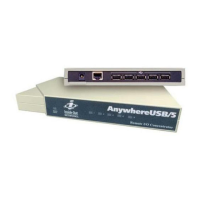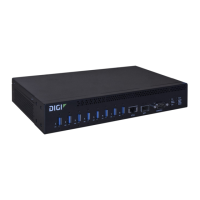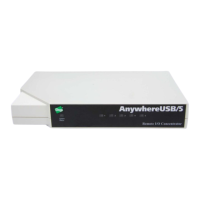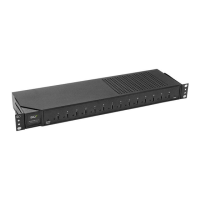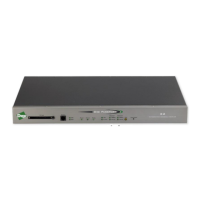Routing IP routing
AnywhereUSB® Plus User Guide
513
5. (Optional) For Label, type a label that will be used to identify this route.
6. For Destination, type the IP address or network of the destination of this route.
For example, to route traffic to the 192.168.47.0 network that uses a subnet mask of
255.255.255.0, type 192.168.47.0/24. The any keyword can also be used to route packets to
any destination with this static route.
7. For Interface, select the interface on the AnywhereUSB Plus device that will be used with this
static route.
8. (Optional) For Gateway, type the IPv4 address of the gateway used to reach the destination.
Set to blank if the destination can be accessed without a gateway.
9. (Optional) For Metric, type the metric for the route. When multiple routes are available to
reach the same destination, the route with the lowest metric is used.
10. (Optional) For MTU, type the Maximum Transmission Units (MTU) of network packets using this
route.
11. Click Apply to save the configuration and apply the change.
Command line
1. Log into the AnywhereUSB Plus command line as a user with full Admin access rights.
Depending on your device configuration, you may be presented with an Access selection
menu. Type admin to access the Admin CLI.
2. At the command line, type config to enter configuration mode:
> config
(config)>
3. Add a new static route:
(config)> add network route static end
(config network route static 0)>
New static route instances are enabled by default. To disable:
(config network route static 0)> enable false
(config network route static 0)>
4. (Optional) set a label that will be used to identify this route. For example:
(config network route static 0)> label "route to accounting network"
(config network route static 0)>
5. Set the IP address or network of the destination of this route. For example:
(config network route static 0)> destination ip_address[/netmask]
(config network route static 0)>
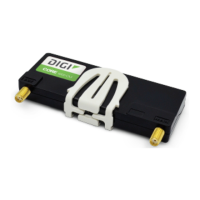
